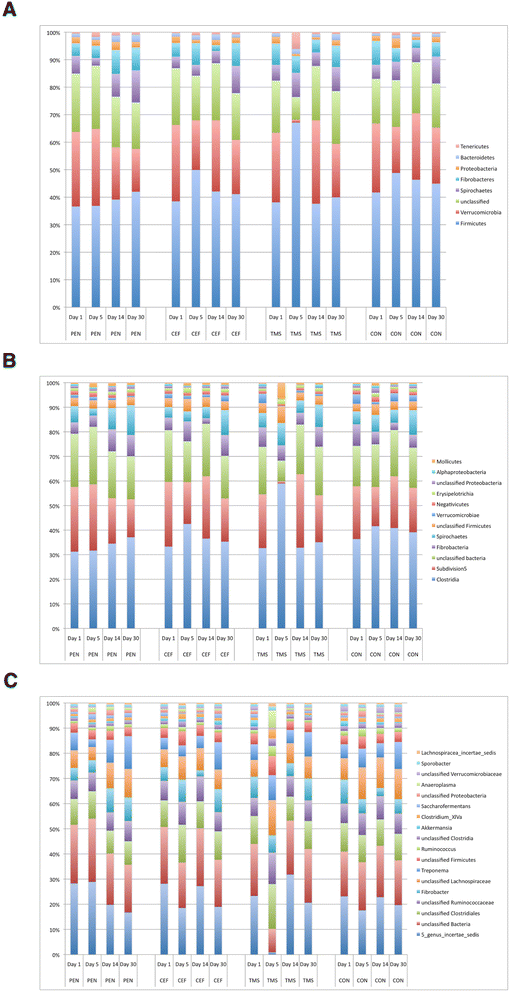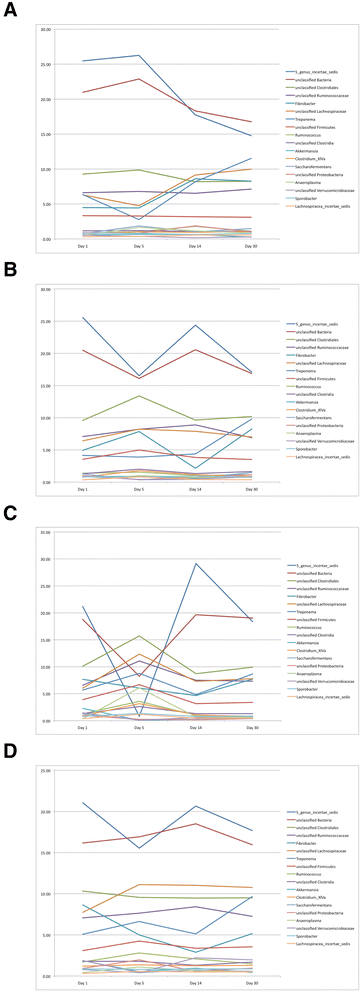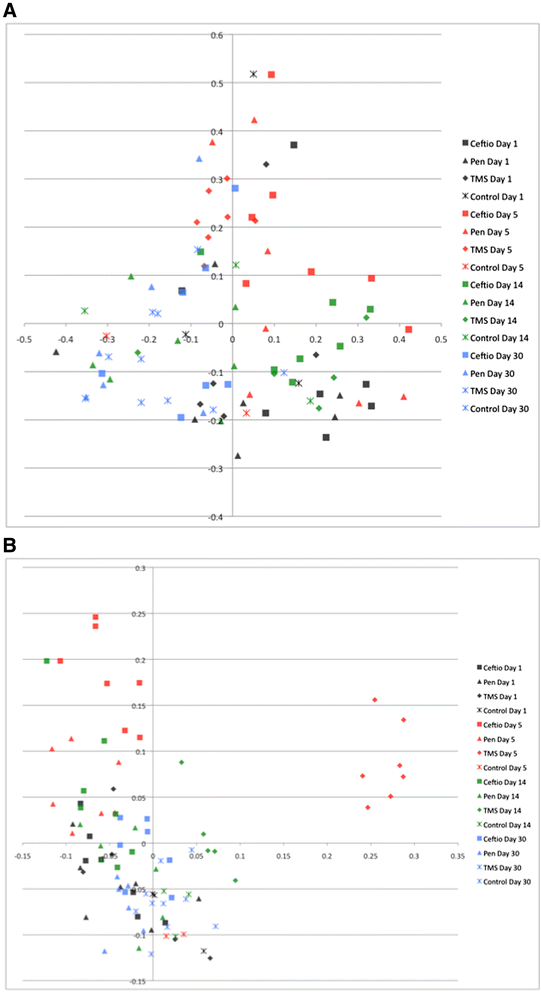Changes in the equine fecal microbiota associated with the use of systemic antimicrobial drugs
- PMID: 25644524
- PMCID: PMC4323147
- DOI: 10.1186/s12917-015-0335-7
Changes in the equine fecal microbiota associated with the use of systemic antimicrobial drugs
Abstract
Background: The intestinal tract is a rich and complex environment and its microbiota has been shown to have an important role in health and disease in the host. Several factors can cause disruption of the normal intestinal microbiota, including antimicrobial therapy, which is an important cause of diarrhea in horses. This study aimed to characterize changes in the fecal bacterial populations of healthy horses associated with the administration of frequently used antimicrobial drugs.
Results: Twenty-four adult mares were assigned to receive procaine penicillin intramuscularly (IM), ceftiofur sodium IM, trimethoprim sulfadiazine (TMS) orally or to a control group. Treatment was given for 5 consecutive days and fecal samples were collected before drug administration (Day 1), at the end of treatment (Days 5), and on Days 14 and 30 of the trial. High throughput sequencing of the V4 region of the 16S rRNA gene was performed using an Illumina MiSeq sequencer. Significant changes of population structure and community membership were observed after the use of all drugs. TMS caused the most marked changes on fecal microbiota even at higher taxonomic levels including a significant decrease of richness and diversity. Those changes were mainly due to a drastic decrease of Verrucomicrobia, specifically the "5 genus incertae sedis". Changes in structure and membership caused by antimicrobial administration were specific for each drug and may be predictable. Twenty-five days after the end of treatment, bacterial profiles were more similar to pre-treatment patterns indicating a recovery from changes caused by antimicrobial administration, but differences were still evident, especially regarding community membership.
Conclusions: The use of systemic antimicrobials leads to changes in the intestinal microbiota, with different and specific responses to different antimicrobials. All antimicrobials tested here had some impact on the microbiota, but TMS significantly reduced bacterial species richness and diversity and had the greatest apparent impact on population structure, specifically targeting members of the Verrucomicrobia phylum.
Figures





References
-
- Glinsky MJ, Smith RM, Spires HR, Davis CL. Measurement of volatile fatty acid production rates in the cecum of the pony. J Anim Sci. 1976;42:1465–70. - PubMed
-
- Costa MC, Arroyo LG, Allen-Vercoe E, Stampfli HR, Kim PT, Sturgeon A, et al. Comparison of the fecal microbiota of healthy horses and horses with colitis by high throughput sequencing of the V3-V5 region of the 16S rRNA gene. PLoS One. 2012;7:e41484. doi: 10.1371/journal.pone.0041484. - DOI - PMC - PubMed
Publication types
MeSH terms
Substances
LinkOut - more resources
Full Text Sources
Other Literature Sources
Medical

